- Images
- Blog
- Tools
- Questar
- The Questar telescope
- Questar resource links
- Search for Questar info
- 172mm Focal Reducer
- Afocal adapter for point and shoot camera
- Camera adapter lengths
- Camera adapter threading
- Camera connection
- Camera focusing
- Custom counterweight
- Drift Alignment Joy
- Finder Eyepiece Compatibility
- The Questar Moon 1981
- Questar Powerguide II Battery Life
- Questar Zone, How to Service Videos
- Red Dot finder mount for Questar
- Questar Viewing Table
- Wedge mounts
- White light solar filters comparison
- How to
- Get started in astronomy
- Astro RaspberryPi Camera and kin, the ASIAir and StellarMate
- Blind Smart-phone Equatorial Wedge or GEM Polar Alignment
- Camera phone adapter
- Celestron FirstScope with equatorial tripod mount
- Coat Pocket Astrophotography
- Day-lapse Images of Earthshine on the Crescent Moon
- Dobsonian Carrying Case
- DSO Astrophotography without a Telescope
- DSO imaging without a star tracker
- Estimating image resolution
- Lunar Eclipse Photography
- Moon photography - a dozen ways to shoot the Moon
- Meteor shower photography & planning
- Matching image sensor size to telescope resolution
- Narrow band imaging with color cameras
- Planetary Image Workflow
- Print and Display Astrophotography
- Observing
- Events
- More
- About
- Contact
172mm Focal Reducer
Any telescope can have its focal length increased (for more magnification) by using a Barlow lens or reduced (to increase field of view) by a focal reducer or positive lens. There are practical limits to this. Focal reducers are frequently used with small sensor cameras to increase their field of view. With a larger sensor, vignetting or loss of focus due to field curvature may limit the focal reducer's usefulness. The images below explore the limits of reducing focal length in the Questar with a large sensor camera.
Jim Reichert of Questar told me that their 3.5" telescope was designed for an 18mm circle of full illumination. My experience shows a flat field and better than 90% of center of field illumination within this radius. At prime focus this is a nice match with an APS-C sensor which is a bit less than 24x16mm.
Questars are often used with full frame (36x24mm) cameras, so there is useful light well beyond a circle of 18mm. An APS-C sensor camera has a field of view of approximately 0.9 x 0.6 degrees at prime focus. This is enough to capture the sun (apparent diameter of about 0.5 degree), but not much more in the short dimension. A focal reduction of about 1.3 x will allow a field of view of about 1.2 x 0.8 degrees with a APS-C sensor, almost double the prime focus image area. This FOV allows single exposure captures of the Pleiades or more of the solar corona in an eclipse. I decided to test the Questar 172mm achromatic positive lens designed to give up to a 0.7x focal reduction.
Summary of results
My testing found that the illumination along the far corners of the APS-C sensor at prime focus was about 60%. With the focal reducer (and by extension a full frame sensor at prime focus) the illumination in the far corners was 20% or less. Loss of field flatness at the edges also makes focusing very critical with some softness of focus at the edges of the image.
How useful this is to you depends on your target. If you are capturing field stars for context in a DSO that is contained in the center of the image, then using the APS-C sensor with a focal reducer or full frame image should be fine with flat frame correction. If you want to capture faint nebulosity or solar corona details up to the edge of the frame you will probably be disappointed.
In terms of field of view, the highest quality Questar images are limited to about a 3/4 degree FOV. With a focal reducer or full frame sensor you can push this to 1.3 degrees or so, but sensitivity and flatness of field are compromised. With smaller sensors the focal reducers will be much more useful.
Examples and measurements
The images below illustrate the performance of the Questar 172mm positive lens with an APS-C camera. Vignetting is significant in the corners. A more powerful focal reducer or a full frame sensor with this reducer will be of little practical benefit.

A flat frame with focal reducer and luminosity measurements at the
center, edges, and corners.
Next is a composite photo of the Moon at sharp focus in the center of the
frame with the 30mm extension tube. Without changing the focus I
repositioned my aim with the Moon at the extreme ends of the frame. As you
can see the focus is soft at the far sides. With a more balanced focus it
may be possible to improve overall focus.
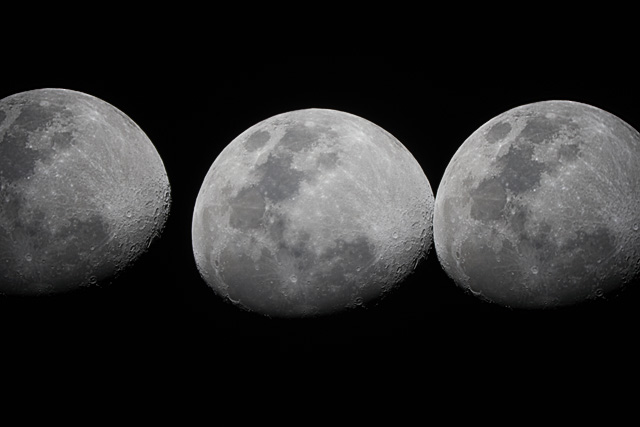
Composite of three Moon images focused only once for the Moon in the
center of the image.
M7, the Ptolemy Cluster, makes a nice size target to see the effects of the focal reducer in both field of view and vignetting due to the Questar's baffles. The image was made with the 172mm focal reducer and about 52mm of extensions (30mm extension tube and 22mm of adapters to the E-mount camera flange). With the focal reducer, the APS-C sensor captures about the same field of view as a full frame sensor. There is significant vignetting in the corners. Measurements of the sky glow background are in rough agreement with the flat frame measurements above.
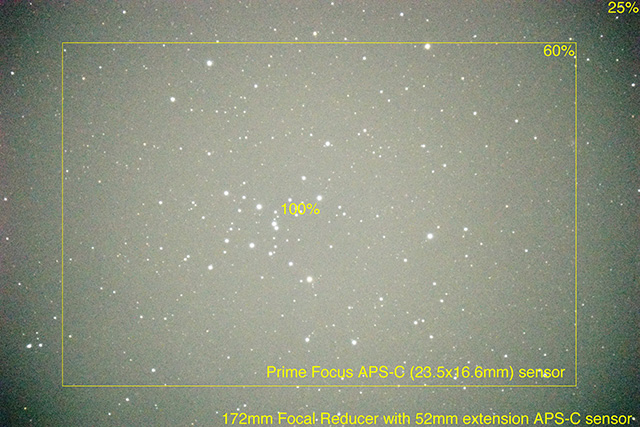
Overexposed M7 with urban sky glow to illustrate FOV & vignetting
with the 172mm focal reducer
Changing the distance between the focal reducer and the sensor allows the amount of focal reduction to be adjusted. The daylight images show the same scene at prime focus and with the focal reducer at two different distances from the camera sensor.
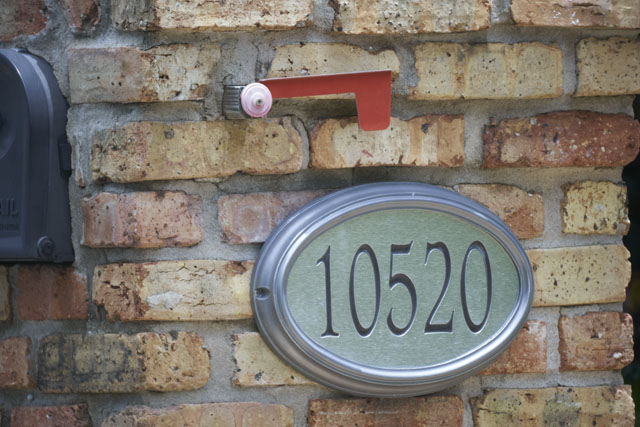
My neighbors mailbox at prime focus.
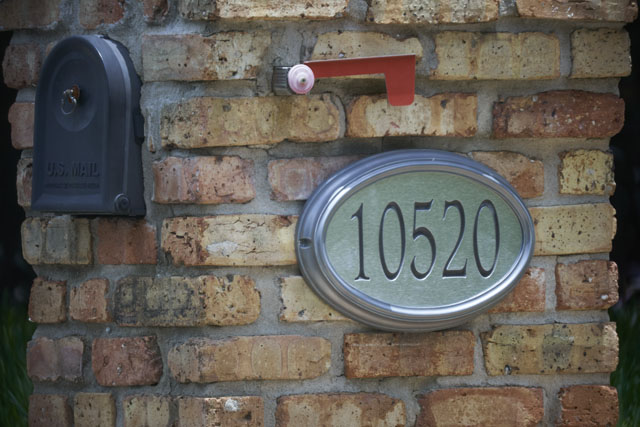
My neighbors mailbox with the 172mm focal reducer inserted after the
swivel adapter. The E-mount adapter adds about 22mm between the focal
reducer and camera lens mount flange.
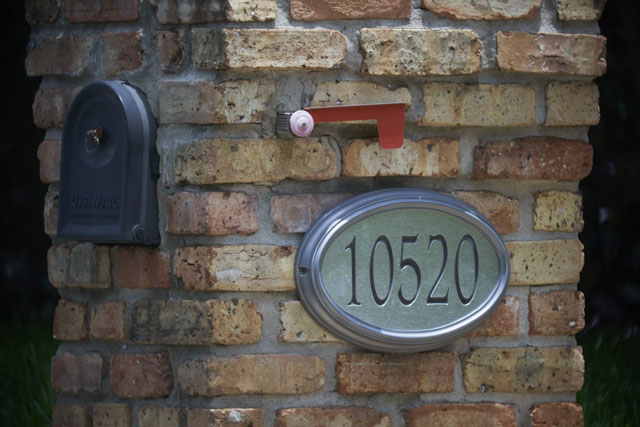
My neighbors mailbox with the 172mm focal reducer and 30mm extension
tube inserted after the swivel adapter.
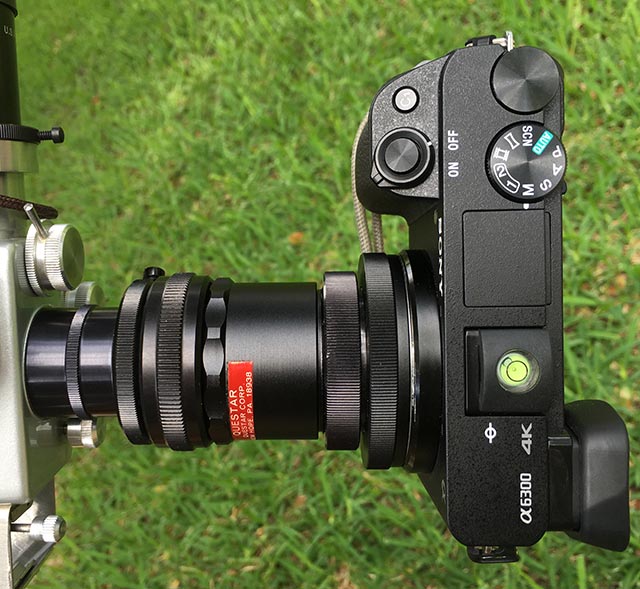
The adapter train with the swivel, 172mm focal reducer, 30 mm extension tube (red label), P to T adapter, T-ring, and camera.
Updated: 2016-08-02 added M7 FOV comparison and better summary of results
Content created: 2016-06-14
Comments
![]() Submit comments or questions about this page.
Submit comments or questions about this page.
By submitting a comment, you agree that: it may be included here in whole or part, attributed to you, and its content is subject to the site wide Creative Commons licensing.


 Wedge mounts
Wedge mounts